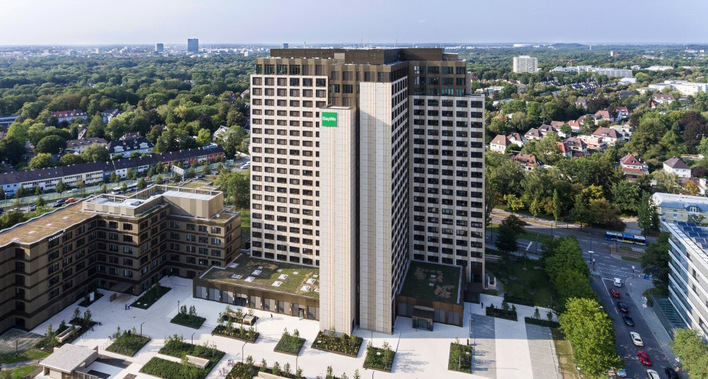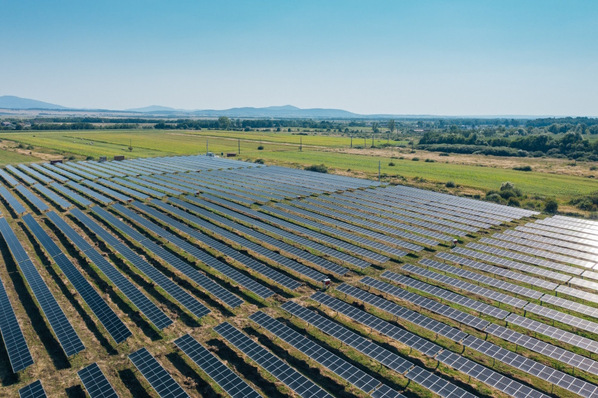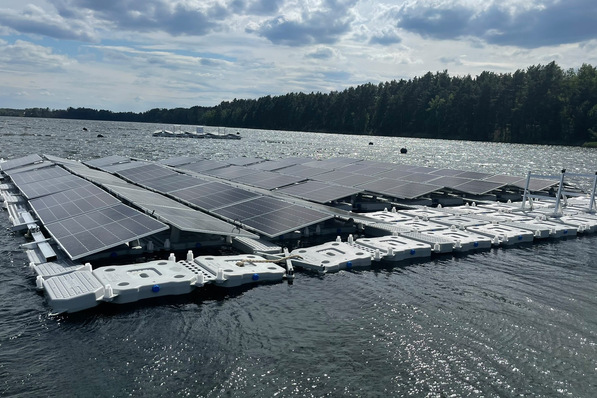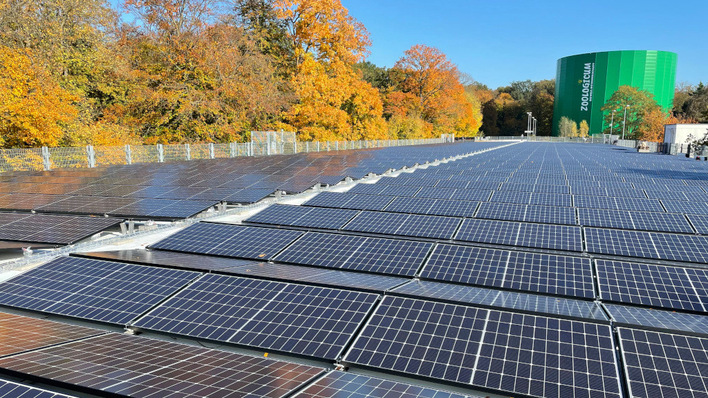"Every kilowatt hour from renewable energies makes Germany a little more independent of imports of fossil fuels," said EnBW board member Georg Stamatelopoulos at the inauguration of the two solar parks in Brandenburg, which together have a capacity of around 300 megawatts (MW).
It has been just under a year since EnBW commissioned Germany's largest open-space solar plant to date, the Weesow-Willmersdorf solar park in Brandenburg. With the inauguration of the two subsidy-free XXL solar parks in Alttrebbin and Gottesgabe, each with around 150 megawatts, the EnBW solar cluster east of Berlin is complete. Solar energy is thus making an important contribution to the renewable energy supply in Germany.
Using the sun for climate protection
Environmentally friendly energy generation from these three large solar parks will avoid around 325,000 tons of CO2 emissions every year. "As EnBW, we would like to make a tangible contribution to sustainable power generation and thus to the Energiewende," Stamatelopoulos added.
He officially inaugurated the two new projects together with Michael Kellner, Parliamentary State Secretary at the German Federal Ministry of Economics and Climate Protection, Gernot Schmidt, District Administrator of Märkisch-Oderland, and the mayors Werner Mielenz and Mario Eska.
State Secretary Kellner congratulated all those involved: "Seeing what has been achieved here puts one in a good mood and is a signal that things are moving forward with the energy turnaround. The expansion through subsidy-free solar parks like here is a huge opportunity and a locational advantage for Brandenburg."
Combination of PV plants and decentralized storage systems
Both plants have been fully operational since the end of March. The approximately 700,000 solar modules generate environmentally friendly electricity for the annual needs of around 90,000 households. Battery storage units, each with a capacity of 3.9 megawatt hours, cover the substations' and inverters' own requirements and also feed generated energy into the power grid.
In this way, the combination of renewable plants and decentralized storage systems helps to make solar power more steadily available. "Wherever it makes sense and is economically feasible, we plan to include such storage systems in our solar parks," explained Thorsten Jörß, Head of Project Development Photovoltaics at EnBW, who welcomed the guests at the inauguration.
Experience history - from the Bronze Age to the Second World War
In addition to the everyday surprises at a construction site, the Alttrebbin and Gottesgabe solar parks offered EnBW's now seasoned construction team further interesting insights into history. Both sites were located in a zone suspected of containing explosive ordnance, requiring extensive clearance work. "This work alone cost a high six-figure sum," informed Jörß. "Whereas the area is now cleared of legacy contamination from wartime, quite a few scrap metal remnants and over 100 horseshoes."
During the earthworks for the grid connection to the substation near Metzdorf, archaeologists found a well with many pottery shards that experts date to the Iron Age, about 2,500 years ago, according to initial estimates. In the process, they also came across the burial site of a child. A stone axe in it suggests it was a burial site from the late Bronze Age - about 3,000 years ago.
"These are exciting events that make every construction of a solar park varied and unique," says Jörß, who is proud of the team's achievement in building and commissioning two large solar parks at the same time within a year. In total, around 30 main and secondary trades and over 100 suppliers had to be managed during the construction phase - plus the surprises on site.
More than 3,000 shrubs will be added to the green space
Technically, the plants are ready. To ensure that they blend properly into the landscape over the years, EnBW will be lending a hand once again in the fall. In both Alttrebbin and Gottesgabe, EnBW is planting more than 3,000 shrubs, including dogwood, hawthorn, wild apple, wild pear and other native species. Over time, this will create attractive habitat and food habitat for small animals, insects and birds within and around the solar plants. (hcn)
Watch our video: Simon Schweda of EnBW: Virtual power plants are driving the energy revolution







